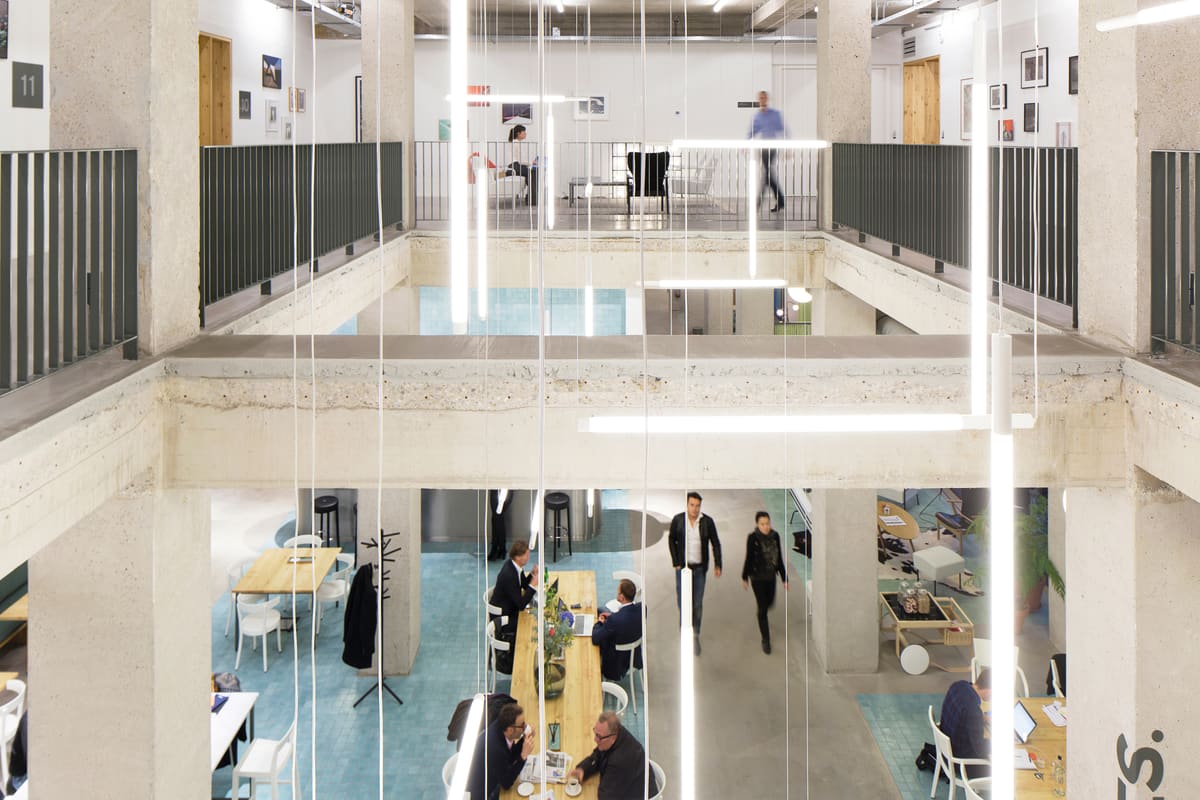More than 70 countries are taking part in trials of a four-day working week. Will it catch on? Is it doomed to failure? Time will tell – but either way, it’s time for businesses to think seriously about their approach to productivity, and hybrid working looks set to take a central role.
The four-day working week is officially being put to the test. Run by research institute Autonomy and masterminded by academics from Oxford, Cambridge and Boston, the study aims to find out whether workforces can achieve the same output (on the same wages) while only working 80% of their previous hours. With 70 countries taking part, it’s the biggest investigation of its kind to date, and it will also be studying the impact on employees’ quality of life.
While we await the outcomes of the trial, one conclusion is already obvious: that we are in a period of change that requires businesses to rethink their approach to productivity. Notably, increased flexibility is already influencing the conversation, with IWG research showing that hybrid working has a vital role to play in reshaping post-pandemic working practices for the 21st century.
The move towards output-focused working
The five-day working week, and the standard working hours of 9 to 5, date from a time when hours worked correlated with output. In a factory, for example, the longer the hours worked, the more would be produced.
This model of working has little relevance to most office jobs today. What matters, businesses are increasingly recognising, is not presenteeism; it’s getting the work done by the deadline, regardless of when or where the work is completed, or how long it takes. Output, not hours, are what’s important.
The cost of burnout
Of course, output is not the only consideration here. Another aspect being investigated by the Autonomy research is the impact of a four-day working week on the employees themselves. In the midst of the ‘Great Resignation,’ the human element will form a fascinating part of the study’s findings, as it increasingly appears that the traditional way of working just isn’t working for a significant proportion of the workforce.
Indeed, MetLife estimates that burnout costs businesses an astonishing £700m ($852.8m) a year, with 80 million hours lost each year and 44% of respondents saying they had called in sick “due to feeling exhausted, stressed, depressed, overwhelmed and unmotivated at work.”
It’s also worth noting that with the pandemic giving many cause to reevaluate their working lives, tackling employee burnout is not just about the immediate cost savings for businesses – there are indirect costs associated with it as well. To attract and retain talent in an employees’ market where flexibility and hybrid working are increasingly prized, they will need to offer a better work-life balance or face increased recruitment costs and staff turnover.
IWG research shows that 72% of office workers would prefer long-term flexibility over where they’re based over earning more money, while two thirds would not apply for a new job unless it offered hybrid working. Employees also identified several benefits to hybrid working, with two thirds (67%) saying it improved their work-life balance and 37% citing improved mental health and wellbeing. Over a third (36%) said it had reduced their commuting load, with 31% saying it enhanced productivity.
In other words, keeping talent on board, and encouraging individuals to find their most productive ways of working, is becoming ever more important.
Productivity versus efficiency
On that note, there’s a distinction to be drawn between productivity and efficiency, with the latter often distracting business leaders from the key issue at hand. As Michael Mankins points out in the Harvard Business Review, productivity is about “doing more with the same” while efficiency is about “doing the same with less”. In the context of the four-day work week, productivity is what’s relevant: it’s about getting more done in those four days. And the answer to that could lie in reducing unnecessary meetings and bureaucracy:
“Our research indicates that the average company loses more than 20% of its productive capacity — more than a day each week — to what we call “organisational drag,” says Mankins. “[These are] the structures and processes that consume valuable time and prevent people from getting things done.”
When businesses let employees be more productive by removing the things that slow them down – like rigid work structures requiring a constant presence at a company HQ – everyone benefits. And when reducing the number of working days, that’s crucial. Of course, with less time available – a whole day a week less – employees’ minds are already more focused, and less time goes to waste.
The future’s flexible
While the world awaits conclusive research findings on how many days a working week should contain, smart business leaders know that the most important issue isn’t about choosing or counting working days, it’s about flexibility. Adaptable, hybrid working is the way forward, regardless of the weekly model a country may choose. Business leaders should trust the process that delivers the best output, and trust their employees to work in a way that makes them most productive.
Discover how an enterprise-level IWG membership can help your company move towards a more flexible future, with advice on your workplace strategy and access to 3,500 flexible workspaces worldwide.






